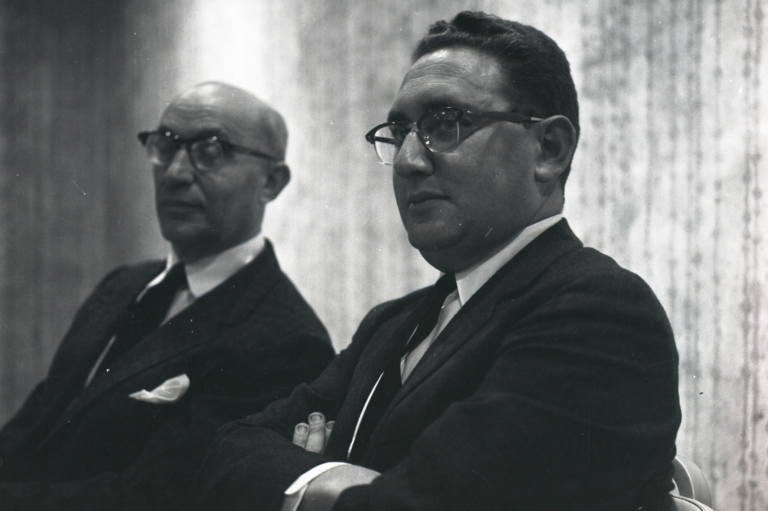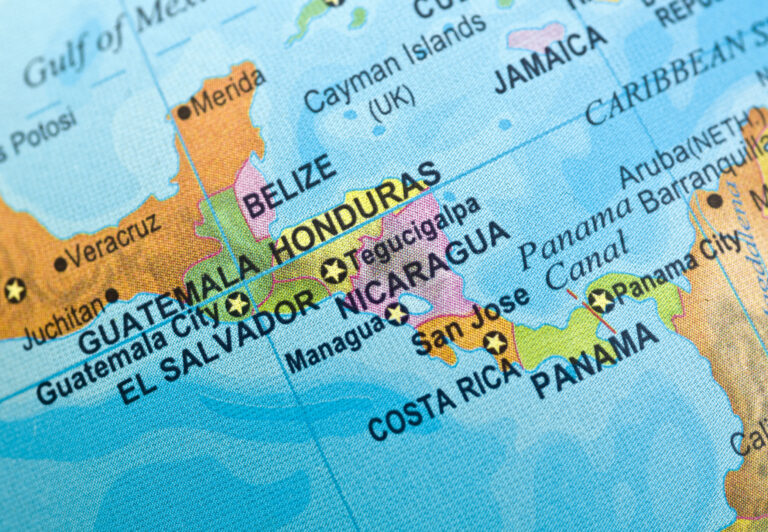The UN Food and Agriculture Association’s (FAO’s) World Food Summit began with the announcement that the summit’s Rome Declaration and Plan of Action had already been decided upon at the summit’s preparatory meetings. This reduced the official Summit’s five days to a largely pointless exercise in pleading, complaint and exhortation. The speeches, hour after hour, from the 187 delegations present quickly came to resemble a propaganda exercise. This was no accident.
With the Cold War now a thing of the past, and its peacekeeping activities passe, the United Nations is eager to promote its new cure-all: population control. Like any good snake-oil salesman, the UN must first convince the customer that he’s sick. It must then convince him that snake-oil, in this case “reproductive health services,” is good for what ails him.
Rome in context
The Food Summit was the last in a series of UN conferences which started with the 1992 “earth summit” in Rio. Then there was the 1993 Vienna human rights meetings, the 1994 Cairo conference on population, the 1994 “social development” sessions in Copenhagen, the 1995 Beijing conference on “women,” and the 1996 Istanbul conference on ‘“cities.” Despite wide differences in their formal topics, these gatherings have been dominated by the issue of population control.
Relentlessly hawked by Western bureaucrats and the UN’s
wanna-be world administrators, a reduction in human numbers has been
touted as a cure for pollution, political oppression, sexual
repression, crowding — everything except the economic and
spiritual malaise of aging and childless populations. So, despite the
fact that the explicit topic of the FAO summit was “sustainable
food security” for the world’s largely under-populated
hungry nations, its “Rome Declaration on Food Security”
includes a commitment to “early stabilization of the world
population,” and its Plan of Action calls for “appropriate
population policies, programmes and family planning services”
and “reproductive health services.” The meaning of
“reproductive health services” is defined elsewhere by the
World Health Organization (WHO) as precisely “the interruption
of an unwanted pregnancy.”1
The population-control language was a bone of contention throughout the series of preparatory committees, or “prepcoms,” leading up to the Rome summit, but its history goes back farther yet. The Cairo population conference saw the first battles between the rich, secularized West and the poor, still-religious South over the UN’s efforts to enshrine a universal right to abortion. That contest ended in a compromise, with the wealthy “G-7” nations and the UN conceding the ‘“Cairo language” on abortion — “respect for various religious and ethical values” — and the developing G-77 countries (encouraged by a fledgling crew of anti-population control activists) conceding the dangerously open-ended language on “reproductive health services” itself. These “code words” would be the issue in all the subsequent contests.
Beijing and Istanbul saw strident efforts by the UN, the developed countries, and their feminist and environmental NGO allies to mandate systematic family planning. Strong Southern opposition, however, forced the UN to retreat to the Cairo language. Though weaker, the Cairo language had already provided sufficient justification for operatives from the United Nations Population Fund (UNFPA), supported by the Children’s Fund (UNICEF), WHO and the International Planned Parenthood Federation, to fan out over the continents of Latin America, Africa and Asia, contracepting, sterilizing and aborting. The real danger at Rome — the Food Summit — was that the G-7 and the UN would use food as the ultimate weapon, muscling poor countries into unconditional acceptance of population control. In Beijing, reports one Dutch lobbyist, UN Food Program director Catherine Bertini had announced that “food is a power we are going to use to change behaviour.”
Rattling the chains
The majority of the Food Summit’s agricultural and international-aid participants, of course, were caught off guard by the focus on the population issue.
“As far as the Canadian delegation was concerned, for any other issues beyond food itself, we assumed that the previous conferences were definitive,” says Agriculture Canada’s Susan Mills, Canadian National Secretary for the World Food Summit. “But when we got to the international prep-coms in Rome at the end of September… Well, I didn’t know what any of these population ‘code words’ meant. We were sitting in the meeting, when Malta and Iran objected to the document’s use of ‘reproductive health services’, and suddenly these words start flying around the room like shrapnel. All I could do was keep my head down. It was weird to see a Catholic country and the Moslem country standing together like that.”
For the UN’s upper-echelon ideologues, however, population control remained the crucial issue throughout. At one point in the prep-coms, which ran through late September and October, delegates were left with the impression that the population-control “code words” would be dropped altogether. But when the delegates picked up their documents at the Summit’s opening, November 12, they had been reinserted.
Resistance mounted
Also on the ground in Rome were several dozen anti-population control activists who had gathered from Europe, Asia, and the Americas, most of whom had earlier been in Cairo and Beijing. An anti-population control umbrella-group — the Caucus for Stable Communities — had wrangled formal UN credentials at Istanbul. But after the UN lost that fight, it refused to be bound by its own precedent. Not only the umbrella organization, but almost all its member-groups, were denied accreditation for Rome. The FAO claimed that the Italian government had voiced “security concerns” about them, though this was later denied by the Italian foreign minister.2
The Caucus members came anyway, some accredited to agricultural NGOs and others to news organizations, and dove into a sea of 3835 UN and national delegates, 758 NGO representatives, and 2073 journalists. The NGO accreditation process was merely the first deceitful defense employed by the United Nations protect its population-control agenda.
Journalists and NGO lobbyists didn’t fare well either. Once the conference opened, they were segregated from the delegates by battalions of security guards. Moreover, the FAO unilaterally decided to cut the number of NGOs permitted to address the plenary session from 50 to only 15. Only the politically correct, like Canada’s Ermineskin Cree, made the cut.
With the Rome documents already drafted and awaiting only signatures, the only recourse left to the anti-population control group at the summit was attempting to convince the representatives of the “G-77” countries to register their formal “reservations” to the document’s numerous and objectionable “reproductive health” clauses. At previous conferences, scores of Catholic and Moslem countries objected to the inclusion of “reproductive health services” language. Because the Rome document cleverly included a reference to the “Cairo language,” many now assumed — mistakenly — that the point had been won and that reservations would be superfluous.
On the summit’s second day, Tim Wirth, U.S. Assistant Secretary of State, announced that he had spoken with the Vatican. He claimed that Curia officials were “delighted, delighted, delighted” with the document, and that they “had no objections” to its wording. His story was widely reported, and only proven false some days later, after Mr. Wirth had conveniently left town. Meanwhile, the FAO indicated that formal reservations to the documents would be accepted until Sunday afternoon, the conference’s close. But at nine o’clock on Saturday morning, FAO director Jacques Diouf suddenly announced to the half-empty plenary session that the deadline would be one o’clock that same afternoon.
Despite its title, little was actually said about food at the Summit. The focus was rather democracy, equity, environmental sustainability, security, market-oriented trading systems and. of course, population. It was repeatedly asserted that the Green Revolution of the 1970s had either failed (because it depended upon fertilizers) or reached its limits, both in arable acreage and yields per acre.
The day before the conference began, professional apocalypster Lester Brown gave a briefing, sponsored by the FAO presumably so its own predictions of looming catastrophe would appear moderate by comparison.
Brown weighs in
As he has each year since 1974, Mr. Brown delivered his annual warning that the world is facing an alarming food shortage, a shortage brought about by a quickly growing population that insists on eating better and better each year. “Between 1950 and 1995,” Mr. Brown reported, “world meat consumption climbed from 44 million to 192 million tons.” This happy fact he decries as a principal cause of the mass starvation which looms before us. [See “Still wrong after all these years” on page 10].
The world now has 5.8 billion people, conference participants agreed, although they differed on whether this number would reach 8.7 billion or double to 11 .6 billion by 2025. In either scenario, both to feed these new mouths and alleviate existing malnutrition, they also concurred, the world will have to increase its food production, but they didn’t know whether the increase would have to be 75 percent or 300 percent. The claim was made that there are 800 million malnourished people in the world, but this was clearly fraudulent: Instead of counting the numbers of people consuming less than 2100 calories daily (411 million, according to the FAO itself), all those eating less than 1.55 times their basic metabolic requirement were thrown in, on the grounds that they may not enjoy a balanced diet.
Alarmist scenarios abounded, but they all seemed overdone, sometimes to the point of absurdity. Because average crop yields have doubled in the last 30 years, it was argued, they won’t improve much more. But what about Southern Farmers who are still getting only 20–40% of their potential yield, even at current technology? Virtually all the arable land is already under the plow, it was claimed, ignoring the fact that some 60 million acres in the US and 20 million acres in Europe have been taken out of production to keep the grain prices up. Even the FAO’s own literature admits that grain consumption will increase by only 1.4 percent per annum from 1990 to 2020, much slower than increases in production, which has historically grown by 2.1 percent per annum.
The most surrealistic side of the Food Summit was the frequency with which FAO “number-crunchers” routinely and casually contradicted the dire predictions of the UN policy mandarins, without anyone seeming to notice. UN Development Program head Gustave Speth described the world as a “disaster-making machine,” with 100 countries worse off today than they were several years ago. Yet just hours earlier, FAO head researcher Stein Bie commented that “disasters are not taking place.” and that the earth can easily support 8 to 12 billion people in the next 25 years. And only hours later, FAO chief analyst Jacques Verceuil would say that, of the ten countries now worst off in terms of food supply, nine have suffered serious warfare.
Powerplay
Not that this mattered, of course. The inclusion of “population programming” into the Food Summit resulted not from a demonstrated “need” for fewer people, but from a power play on the part of its proponents. World Bank president James Wolfensohn announced that, if poor countries expect any relief on their international debts, “they’d better be prepared to adopt a reasonable social policy.” And at least one Southern delegation reported that the American delegation had threatened to cut off its food aid. As a result of this pressure, and foreshortened deadline for the submission of reservations, only a handful of Southern nations objected to the inclusion of “reproductive health services,” although most Muslim countries and the Holy See did.
Joe Woodard is a Canadian reporter experienced in covering the United Nations
Endnotes
1 Oddly enough, WHO has no “official definitions for conception/pregnancy and abortion.” See letter dated 21 November 1996 from Jane Cottingham, of WHO’s Special Programme of Research, Development and Research Training in Human Reproduction, to Sylvia Jimenez. Despite its studied inarticulateness on these key health matters, WHO has no compunctions about advocating the “interruption” of “unwanted pregnancies.”
2 Late in the Summit, Australian journalist Babette Francis asked Italian foreign minister Lamberto Dini why the Italian government had refused to admit the Caucus members. “No, no,” he said, genuinely surprised. “Italy had no reason to deny any NGO the right to come here.” He went on to say that the decision must have come from elsewhere.










